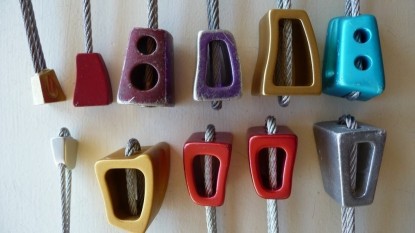Frost Works Sentinel Nuts Review
Our Verdict
Our Analysis and Test Results
Likes
The Sentinel's nearly strait-sided taper was the easiest to clean of any nut in the review. The Sentinel also has relatively long faces, which provide greater surface area and thus greater holding power. The Frost nut has an excellent taper along both axes. We used Frost nuts more than others in both orientations because the taper was more aggressive in the side-to-side (less common placement style) orientation. The larger sizes of the Sentinel nuts were among the nicest to place, not sliding around on the cable when we adjusted our placement (as happens with Black Diamond, ABC or Omega Pacific models). We also like the price, Sentinels being among the least expensive nuts we tested. Of the nine sizes available, we liked the small ones and found that none of the larger sizes were too big. Also, Sentinels were not as good as any of the offset models in flaring cracks but their aggressive taper made them appropriate in some pin scars.
Dislikes
The nearly strait-sided faces didn't fit into irregular rock types as well as most other models. The Sentinel nuts also performed below average when it came to parallel sided cracks; we rate them just below BD Stoppers and Wild Country Rocks on a Wire. In the longer, cabled version they got tangled more and also hit us in the knee if we racked them on our harness. Sentinels were the only nut we tested not to have anodized heads, which made hunting for the correct size more difficult. Sentinels were the heaviest nut in the review.
Best Application
Sentinels are great priced nuts with a design that has stood the test of time. Easy placement assessment and a nice size range makes them a good selection for beginners. These nuts favor, but aren't limited to, smooth rock such as that in Yosemite, Index and the Adirondacks, but are among the poorest nuts we tested in more heavily featured rock. As the heaviest nut we tested, Sentinels are a poor choice for alpine use or climbers looking to shave a few ounces.
Value
Frost Sentinel nuts are a great deal. They are a good rack to build from and learn to climb on. While not as versatile as many nuts we tested, they work well in common bottleneck placements. They are tough, easy to clean and it is easy to assess their placement quality, making them an excellent choice for climbers breaking into the sport.



